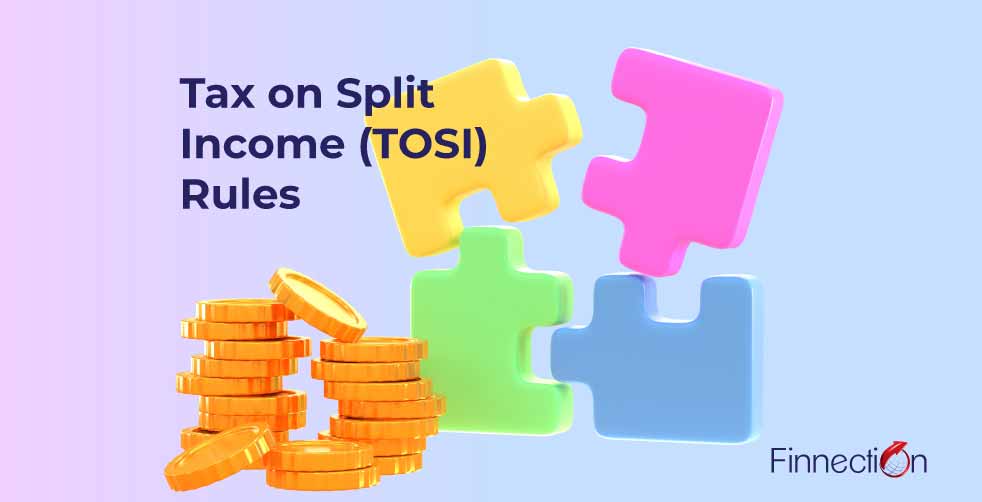Nobody wants to pay more taxes than needed, so many Canadian taxpayers may decide to use a technique known as “Income Splitting” to lessen part of their tax obligations.
Many small business owners forget to add their spouses and children as shareholders when incorporating their companies, even if they might be employed by the company.

Some split their income by issuing shares to their spouse and kids only. Of course, the CRA realised this and in 2018 created the Tax on Split Income rules (TOSI).
Definition of Income Splitting
High-income owners of private firms can utilise the “income sprinkling” approach, sometimes known as “income splitting,” to transfer their money to dependents with lower personal tax rates.
To put it simply, income splitting is the transfer of income from a family member with a high income to a family member with a lesser income in an effort to reduce the total amount of tax paid by the family.
Income Splitting Eligibility
You and your husband or common-law partner must live together in Canada in order to be eligible to split income. At the end of the tax year, the couple must have been living together for at least a year and must not have been apart for more than 90 days.
Income Splitting Rules
According to income tax regulations, the TOSI is applying the highest marginal tax rate, which is presently 33% to split an individual’s income. Earlier, TOSI only applied to individuals under the age of 18, however moving forward, now it will apply to individual above 18.
How does the Split Income Rule work? Here is a brief synopsis:
Say you run XYZ Business as your company. Although you are the only shareholder, your spouse assists you in running the company without receiving compensation.
The business had a successful last year, and you now wish to distribute $50,000 in dividends. If you had to take the entire $50,000 and declare it on your personal tax return, you would be subject to a high rate of tax because you are the sole shareholder. However, if your spouse significantly contributes to the company, you may be able to pay dividends to your spouse based on that contribution.
To explore significant contribution, CRA has stated that they will consider the following factors.
- The spouse’s age must be at least 25.
- They must contribute reasonable labour to the firm.
- They must be in risk in the context of the business.
- Previous compensation, how much was the spouse previously paid?
These requirements are examined on an individual basis, however concrete proof that the contribution is significant is required.
There could be significant tax savings if all the requirements are satisfied and $12,500 of the dividends are then paid to your spouse for their participation in the business.
Let’s now examine the opposing viewpoint on this matter.
If, your spouse does not significantly contribute to the company, even though they are a shareholder, you cannot effectively distribute those dividends to them. If you did and the CRA evaluated your case, CRA would assign 100% of the income to you, and you would be subject to the highest tax rate.
The TOSI regulations are incredibly complicated, and this article does not cover all of their complexities. To understand how the TOSI laws will affect your business, it is recommended that you speak with a tax expert about your specific business circumstances.
If you have any questions, feel free to contact finnection via email at info@finnection.ca or call us at (647) 795-5462
Disclaimer: Above information is subject to change and represent the views of the author. It is shared for educational purposes only. Readers are advised to use their own judgement and seek specific professional advice before making any decision. Finnection Inc. is not liable for any actions taken by reader based on the information shared in this article. You may consult with us before using this information for any purpose.
